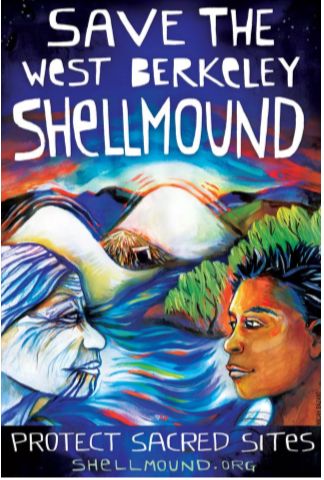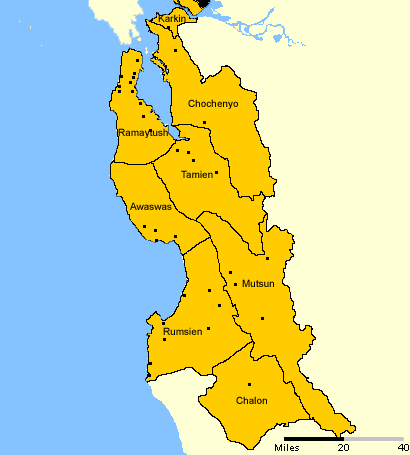BERKELEY, Calif. — On June 4, members of Bay Area Reclaiming issued a statement opposing the development on the site of the Ohlone Shellmound in West Berkeley. For the native peoples of the Bay Area, shell mounds functioned like temples and burial complexes. Developers are poised to build apartments, restaurants, and a parking garage on the site of the shell mound. That threat elicited the statement from Reclaiming members. The living Ohlone and their supporters have developed a counter proposal, under which the site would be developed as an archaeological and historic park to emphasize Ohlone culture. The shell mound has been designated a city landmark by Berkeley leaders, and it is also a designated state archaeological site.

Reclaiming emerged in the Bay Area among people whose ancestors mostly lived somewhere else. The Ohlone and their ancestors, in contrast, have lived in the Bay Area for thousands of years. While Neopagans and native peoples practice earth-based forms of spirituality, these traditions have complicated cultural and political relationships. The Reclaiming statement argues that Neopagans have a responsibility to defend Native American cultures.
Reclaiming member Abel Gomez called for people to acknowledge that the Ohlone, and other native people, are “defending their sacred places and creating futures.” He continued, “As settlers/immigrants/visitors on their lands, it’s important to both recognize this, and follow their lead to create a truly just world. This is why working with Ohlone families to protect the West Berkeley Shellmound is so important.” If people want to support or keep up with the defense of the Berkeley Shellmound, Gomez said people should visit its website or Facebook page.
Some Neopagans attempt to freeze Native Americans in their past, rather than deal with their living descendants. Gomez said, “Ohlone peoples are still here. They have survived the multiple genocidal attacks against their community and are working to rebuild, heal, and remember from the generations of violence.” Since the 1960s, the living Ohlone have begun to reconnect with their languages, ceremonies, and oral traditions of their ancestors.
Before contact with European settlers, no single Ohlone tribe or nation existed. Native Americans settled along the coast of the bay, creating ceremonial mounds in their villages. These mounds consisted of shells, human remains, burial offerings, and animal remains. In the 18th century, sustained contact began.

Map of Ohlone languages, exact boundaries questionable [Bruce Hallman].
Europeans and Euro-Americans tried to “ethnically cleanse” the Bay Area of the Ohlone. This process has destroyed or damaged most historic evidence of these people. The oldest of these shell mound-village complexes is the West Berkeley Shellmound. Excavations have revealed 5,000 years of history at the site of the West Berkeley Shellmound. This makes the shell mound contemporary with Stonehenge and older than the pyramids. Those same excavations disinterred almost 200 human burials; no members of the Ohlone tribe gave permission to disinter their ancestors. They were not asked.
Today, the descendants of the Ohlone live throughout the Bay Area. To the living Ohlone, this attempt to “develop” the West Berkeley Shellmound site constitutes the latest attempt to “ethnically cleanse” the Bay Area of the Ohlone presence.
Gomez emphasized the differences between native spiritual traditions and monotheist traditions. “Like other native peoples, the ceremonial practices of Ohlone peoples are place-based. The land holds language, history, myth, culture, memory, knowledge, and sacred power. The ancestors and other spirit presences are alive in the landscape.”
The San Francisco Bay Area has spawned many Neopagan movements. This further complicates the relationship. Before European contact, conquest, epidemics, settlement, and attempted genocide, the Bay Area was Ohlone land. Gomez said “Non-native people, like myself, need to keep thinking about what it means to live and practice our own ceremonies on colonized lands.”
On June 5, Berkeley City Council members rejected the most recent move by the developers., an attemptto invoke a streamlined process to begin development. The denial was based on the site’s city landmark and state archaeological statuses. The developers have 90 days to revise and reapply for this process. City officials would then review it again.
The Wild Hunt is not responsible for links to external content.
To join a conversation on this post:
Visit our The Wild Hunt subreddit! Point your favorite browser to https://www.reddit.com/r/The_Wild_Hunt_News/, then click “JOIN”. Make sure to click the bell, too, to be notified of new articles posted to our subreddit.
